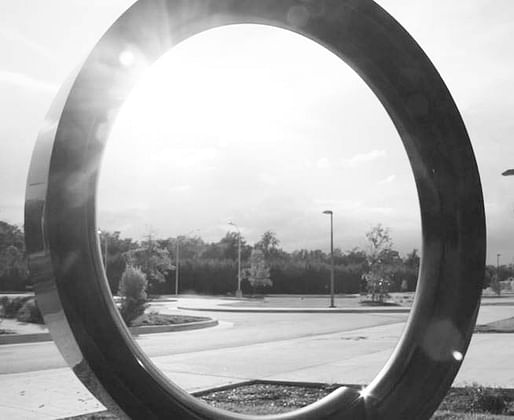
And the answers were:
1. Design for Mental and Behavioral Health
Keynote: Mardelle McCuskey Shepley, Cornell University
The lack of attention for behavioral and mental health treatment options is a serious concern. Mardelle McCuskey Shepley and her team inspired optimism that developments in genetics, patient participation, guideline development, and public awareness will help treatment options to improve. They also suggested that changes in social acceptance of mental health disorders will lead to richer, more complex, flexible, and safe mental health spaces.
2. Making General Hospitals Less Dangerous For Patients With Co-Existing Mental Illness; Integrated Inpatient Design
Presented by: James M. Hunt, AIA and David M. Sine, DrBE, CSP, ARM, CPHRM
Hunt and Sine started their presentation by looking at the history of psychiatric hospitals. From the famous Greystone Hospital, to the Panopticon, to examples of more recent facilities where evidence-based design fell short, resulting in prison-like environments, the team took a stand for “Integrated Healthcare Design”. Their premise was that “treating the whole person (including the diagnoses) in one place, by one treatment team, is a growing trend that has been “long overdue”.
Hunt and Sine’s position was that the built environment can make a huge difference in patient safety, and outcomes if they are designed to minimize access to hazardous items, and when designed with the most consideration possible for minimizing safety risks in patient bedrooms and bathrooms, where most tragedies occur.
As experts and authors of the Facility Guidelines Institute’s (FGI) “Guidelines for the Design and Construction of Hospitals and Outpatient Facilities”, their experience on the subject was shared in detail, emphasizing the importance of the “Safety Risk Assessment”. This combined with The Center for Health Design’s “Safety Risk Assessment Toolkit”, were presented as tools for all construction projects.
3. Wounded Warriors - A Clinic To Address “Invisible” Wounds
By Tae Y. Jung, AIA, Vice President, Design Leader in NIKA
“In 2008, the Intrepid Fallen Heroes Fund asked top military and civilian brain specialists to develop a new standard of care for Traumatic Brain Injury. Blending the most advanced findings about the brain with team medicine, we created the Intrepid Spirit Centers.” - David Hovda, PhD, Director of the UCLA Brain Injury Research Center
Beginning with a video on Intrepid Spirit Centers and TBI, (HERE: https://vimeo.com/133748504) testifying the efficacy of the Invisible Wound Center programs, where patients spoke about being desperately suicidal and homicidal as a result of unique PTSD categories. They spoke of rage at themselves and others, of desperation, and hopelessness - and they spoke of how a clinic, a built environment and physical space, gave them hope and healing.
In the video, Dr. Bret Logan, Director of the Intrepid Center in Fort Campbell, KY, appropriately articulated that Intrepid Spirit Centers are a “Gymnasium for the Brain”.
“From the first minute you walk through the door, you know that this place feels different… that this doesn’t look like any other typical military treatment facility or civilian treatment facility.” - Captain Rick Freeman, Commanding Officer, US Naval Hospital, Camp Lejeune, NC.
Conclusion
Saturated with information and ideas, combined with a reaffirmation that design is making a difference on the lives of children and adults faced with mental health challenges, Architects and designers, (in conjunction with user groups, therapists, health care practitioners, and patients) are changing how we build for Mental Health.

This Pebble-In-Practice Workshop was created and hosted by the Center for Health Design: These unique, immersive experiences dive deep into strategic design trends that are shaping tomorrow's healthcare environments. Attendees interact with healthcare industry leaders and colleagues, tour exemplary facilities, and learn through presentations and group think-tanks.
Additional Credits:
The Center for Health Design (CHD). Natalie Gonzalez (Project Manager, CHD), Ellen Taylor, (Vice President for Research, CHD & Host), SAMHSA, World Health Organization, Watson, Pitts, Garrity, Spelman, Kelkar, Fronsman, Foundation for the Academy of Architecture for Health, Architecture+, Shepley Bulfinch, Pasha, Lincoln, YS. & Guba, EG. (1985). Naturalistic Inquiry. Newbury Park, CA: Sage Publications., Medco., America’s State of Mind; (2010). Available from the internet: http://apps.who.int/medicinedocs/documents/s19032en/s19032en.pdf, Joint Commission. (2007). Suicide Prevention: Toolkit for Implementing National Safety Goal 15A: Joint Commission Resources, The Facility Guidelines Institute, (2014). Guidelines for the Design and Construction of Hospitals and Outpatient Facilities. The Facility Guidelines Institute, 2014, The Center for Health Design. (2015). Safety Risk Assessment Toolkit. Concord, CA: The Center for Health Design. Available from Internet: www.healthdesign.org/insights-solutions/safety-risk-assessment-toolkit-pdf-version, Hunt JM., Sine DM., “Design Guide for the Built Environment of Behavioral Health Facilities –Edition 7.0”. [2015] Facility Guidelines Institute. Available from Internet: http://www.fgiguidelines.org/resource/design-guide-built-environment-behavioral-health-facilities/, NIKA, DoD, Army, Veterans Administration
Architecture, Design, Humanity, Mental Health, Behavioral Health, HealthCare Matters
No Comments
Block this user
Are you sure you want to block this user and hide all related comments throughout the site?
Archinect
This is your first comment on Archinect. Your comment will be visible once approved.